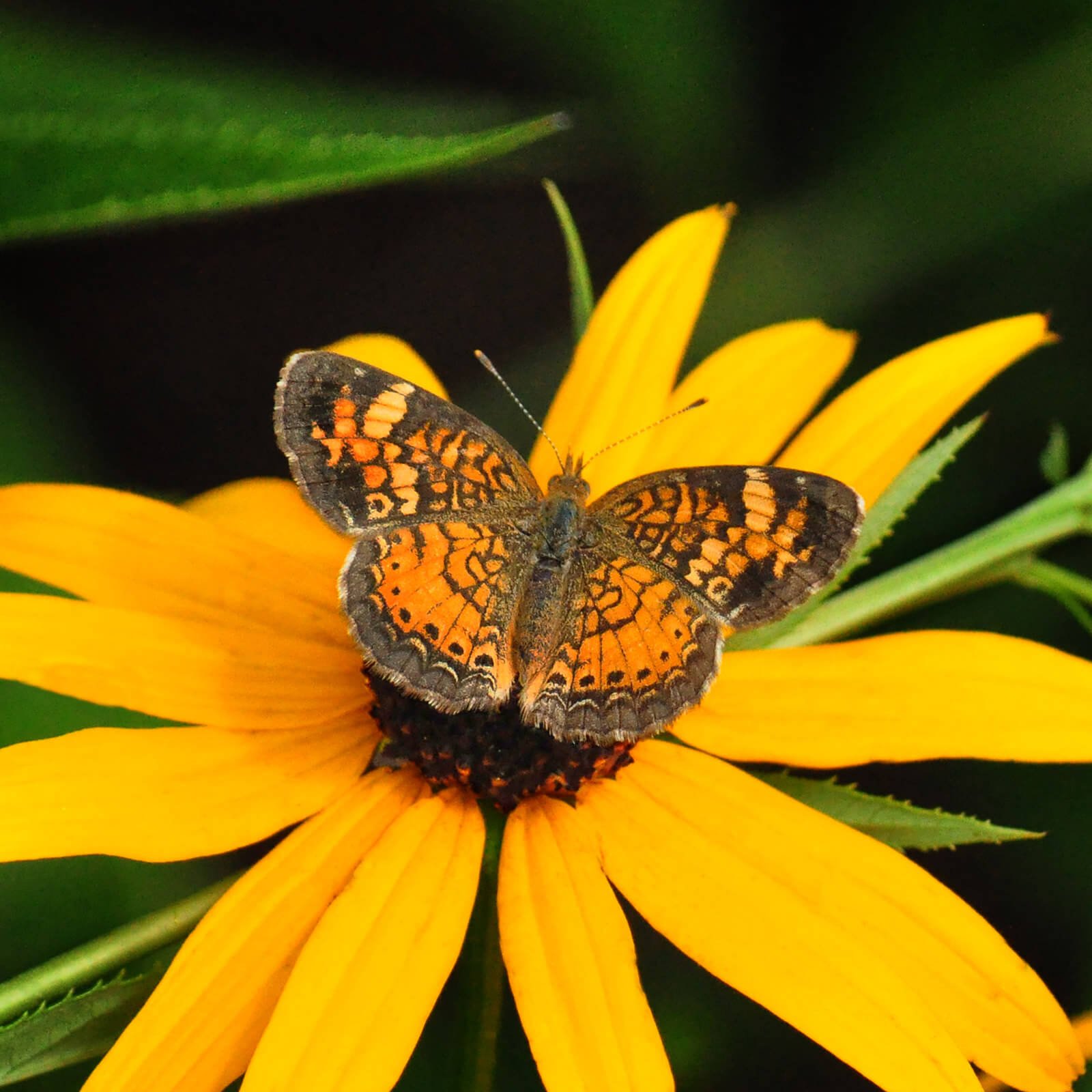Life Cycle: Perennial
Sun Exposure: Full-Partial shade
Soil Moisture: Wet-Medium
Height: 2-5 feet
Plant Spacing: 2-3 feet
Bloom Time: September-October
Bloom Color: White to lavender
Advantages: Caterpillar Favorite, Pollinator Favorite, Bird Favorite
Host Plant: Pearl Crescent and 42 other species of butterflies and moths in our area (illnoiswildflower.info)
Specialist Bee: I am making the assumption that this is similar to other asters. Andrena asteris, A. aliciae, A. simplex, A. asteroides, A. canadensis, A. chromotricha, A. hirticincta, A nubecula, A. placata, A. simplex, Calliopsis coloradensis, Colletes americanus, C. compactus, C. rufocinctus, C. simulans, C. speculiferus, Melissodes dentiventris, M. boltoniae, M. confuses, M. coreopsis, M. dentiventris, M. druriellus, M. illatus, M. lustrus, M. menuachus, M. microstictus, M. niveus, M. semilupinus, M. subagilis, M. subillatus, M. tinctus, M. trinodis, Perdita octomaculata, P. albipinnis, Pseudopanurgus aestivalis, P. andrenoides, P. compositarum, Megachile inimical, Anthophorula asteris, and Dianthidium simile (Johnson and Colla, 2023)
Resource: Johnson, Lorraine, and Sheila Colla. A Northern Gardener’s Guide to Native Plants and Pollinators: Creating Habitat in the Northeast, Great Lakes, and Upper Midwest. Island Press, 2023










